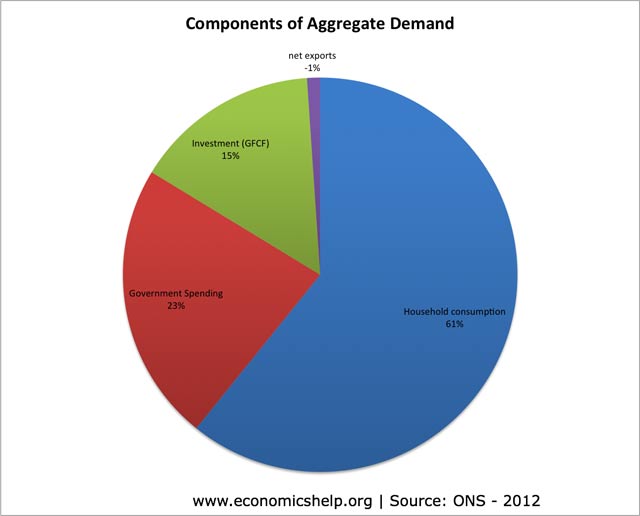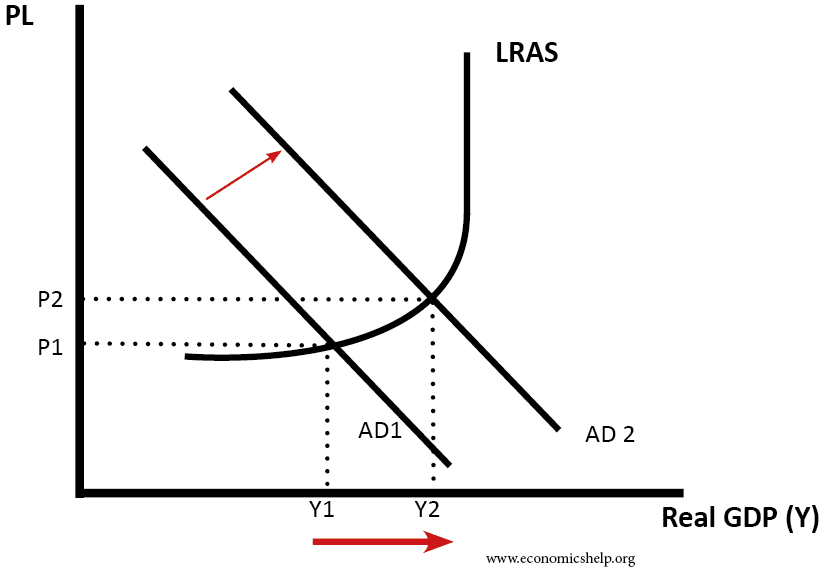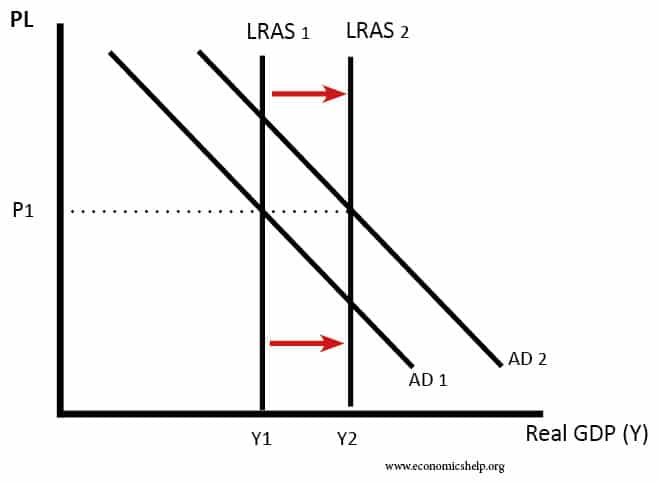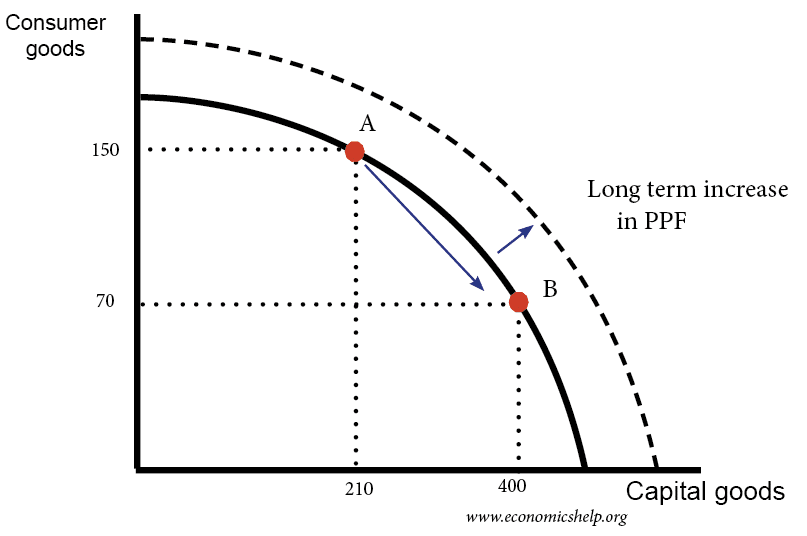Readers Question: What are the effects of increased investment on aggregate demand in the short term and the long term.
- Investment means capital expenditure (e.g. purchasing machines or building bigger factory)
- Investment is a component of AD – AD+ C+I+G+X-M.
- Investment spending takes about 15% of AD; it is not as significant as consumer spending which is 61%.
If Investment increases, then ceteris paribus, AD will increase.
Effect of investment in the short-term
The increase in aggregate demand will lead to higher economic growth and possibly inflation.
Multiplier Effect
If there is spare capacity in the economy, an increase in investment could cause a knock on effect throughout the economy. The initial increase in investment causes a rise in output and so people gain more income, which is then spent causing a further rise in AD. With a strong multiplier effect, there may be a bigger increase in AD in the long-term.
Effect on aggregate supply (long-run)
In the long term, an increase in investment should also increase productive capacity and increase aggregate supply.
Therefore, investment can enable a more sustainable increase in AD. The increase in capacity enables a sustained rise in AD without causing inflation. If the economy is at full capacity and AD rises then there will be just inflation.
Effective investment can help increase the long-run trend rate of economic growth.
Evaluation of the effects of higher investment
It depends on the economic circumstances. For example, if there was a situation of falling house prices and lower consumer spending, increased investment may be insufficient to increase AD. Also, at only 15% of AD, it is a relatively small component and can easily be outweighed by domestic consumption.
Investment only 15% of AD

The opportunity cost of investment. If an economy devotes a higher share of GDP to investment, then in the short-term, this implies a lower share of GDP for consumption. Investment is financed out of savings. Therefore, a shift to investment could lead to lower consumption in short-term, though, if successful, the investment can enable increased productive capacity in the long-term
This PPF curve shows a trade-off between consumer goods and capital goods (investment) A move from A to B reduces consumption in short-term but increases PPF in long-term
How effective is the investment? Different types of investment can give quite different rates of return. For example, investment in the Sony MiniDisc proved ineffective in boosting productive capacity as the technology was later obsolete. Government investment can also vary in quality. For example, state-supported investment in Concorde (super-sonic) jet had a poor rate of return and the project was deemed unprofitable. However, public investment in improving road network could help reduce congestion and improve long-term economic growth.
See also:



